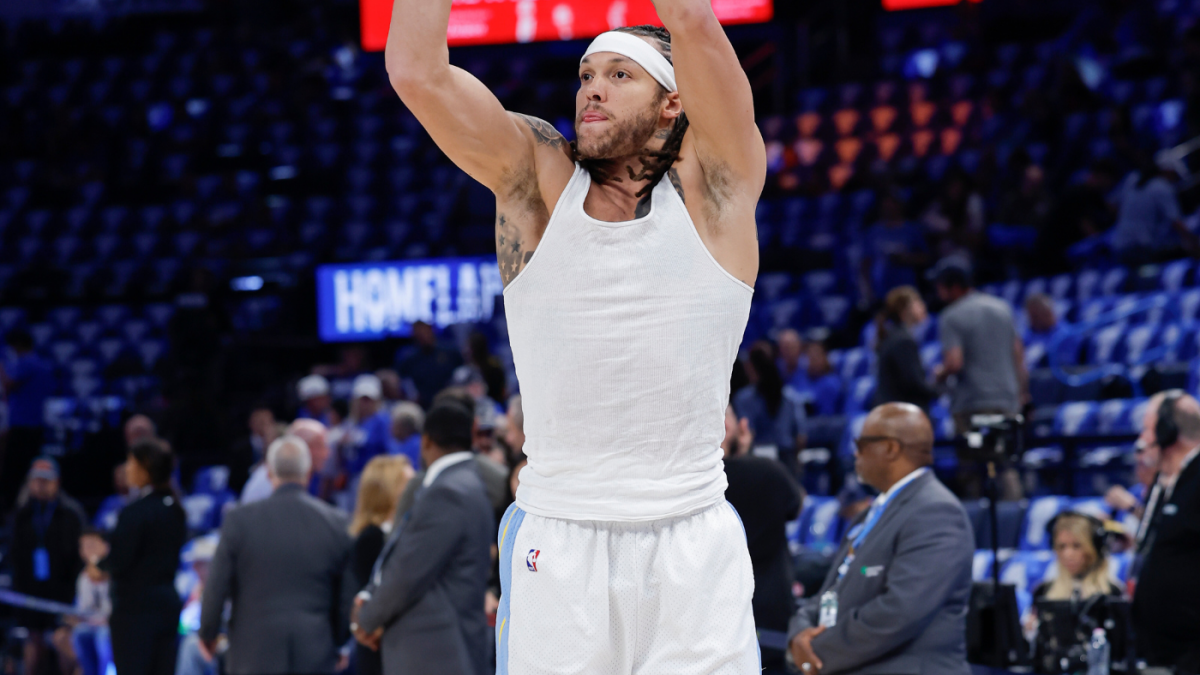The Complex Dynamics of Aaron Gordon’s Hamstring Injury and Its Impact on the Denver Nuggets
In the realm of professional basketball, the checkerboard of player health, team strategy, and competitive urgency often sets the stage for dramatic narratives. The case of Aaron Gordon’s Grade 2 left hamstring strain as the Denver Nuggets face a decisive Game 7 against the Oklahoma City Thunder exemplifies this intensely nuanced intersection. His injury doesn’t merely add a medical footnote; it carries strategic, psychological, and performance implications that ripple through the entire organization and its quest for playoff success.
Decoding the Grade 2 Hamstring Strain: More Than Just a Painful Muscle Pull
At the heart of this situation lies a Grade 2 hamstring strain, an injury characterized by partial tears in the muscle fibers of the hamstring group. Unlike a mild Grade 1 strain, this level of injury disrupts normal muscle function substantially and often prohibits explosive lower-body motions. For a player like Gordon, whose game relies heavily on sudden accelerations, vertical leaps, and lateral quickness, the injury translates to both immediate pain and a tangible limitation on the court.
The typical recovery timeline stretches over several weeks and involves a careful balance of rest and rehabilitation exercises designed to rebuild strength without reopening the tear. Medical professionals caution that premature return to play is fraught with risks, including worsening the strain or triggering compensatory injuries such as calf muscle complications. This underscores a crucial tension: the raw desire to compete at critical moments versus the physiological demands of healing.
Conflicted Narratives: Availability for Game 7 and What It Means
Reports surrounding Gordon’s availability have oscillated noticeably, mirroring the broader uncertainty in managing moderate sports injuries. Some updates suggest that Gordon will start the game, bolstered by pregame assessments and the coaching staff’s confidence in his readiness. Others temper expectations, labeling his status as “questionable” or implying he may not suit up at all.
This ambiguity itself affects decision-making on multiple fronts. On one hand, the coaching team must weigh the value of his talents on the floor against the medical consensus advocating caution. On the other hand, Gordon’s potential participation embodies more than just physical presence—it signals psychological resilience and commitment to the team’s cause. Nuggets head coach David Adelman’s stance, reportedly endorsing Gordon’s availability if he can physically compete, captures this spirited resolve.
Strategic Impacts: Navigating Team Dynamics in Gordon’s Absence or Limited Capacity
Aaron Gordon’s role on the Nuggets extends well beyond conventional statistics. His ability to guard multiple positions, instigate fast breaks, and contribute vital points is instrumental in orchestrating the team’s overall flow. A hampered Gordon or his absence creates several tactical challenges:
– Offensive Constraints: Without Gordon’s dynamism, Denver’s offense may struggle to penetrate defenses and generate high-efficiency scoring chances. His capacity to draw defenders and open lanes for teammates like Nikola Jokić becomes compromised.
– Defensive Vulnerabilities: Gordon’s defensive agility allows the Nuggets to switch assignments fluidly and contest perimeter and interior shots alike. Losing this flexibility could enable the Thunder to exploit mismatches, especially in crucial playoff moments.
– Rotation and Energy Management: Reduced minutes from a key forward would demand increased contributions from bench players or role players less accustomed to heavy responsibilities. This scenario risks depleting depth and endurance, potentially impacting performance quality late in the game.
– Psychological Effects: The uncertainty regarding Gordon’s condition can simultaneously motivate the team to rally and induce anxiety about diminished strength, underscoring the intangible variables that injuries impose.
Reflecting on Similar Precedents: Injury Management in High-Stakes Playoffs
Comparisons to other athletes, such as Stephen Curry’s earlier playoff hamstring injury, draw attention to the cautious protocols typically advocated for muscular strains. Curry’s Grade 1 injury, less severe than Gordon’s, necessitated game absences to safeguard his long-term fitness. Gordon’s team choosing to push the envelope amidst a Grade 2 strain highlights the often uncompromising pressure in playoff basketball, where each loss can terminate a championship pursuit.
This high-wire act of balancing risk and reward encapsulates the broader conundrum facing teams: the imperative to win now versus preserving player health for future campaigns. Gordon’s situation illuminates how injury management is not merely a medical decision but a strategic pivot point laden with consequences.
Balancing Drive and Caution: Charting a Path Forward
The saga of Aaron Gordon and the Nuggets as they approach Game 7 encapsulates the profound complexities of elite competitive sports. His grade 2 hamstring strain challenges the team to craft nuanced strategies that weave together cautious health management with aggressive pursuit of victory.
Should Gordon play, his presence will exemplify determination and grit, inspiring teammates and fans alike. Yet, this comes tethered to tangible risks that could extend his recovery period or degrade future performance capacity. As such, the Nuggets must prepare contingency plans, optimizing their roster and tactical approach to accommodate any scenario—from Gordon leading the charge to him sidelined for precaution.
In sum, this unfolding scenario vividly portrays the intricate dance between athleticism, injury, team strategy, and psychological resilience. It underscores the razor-thin margin separating triumph and setback in playoff basketball, reminding all observers that behind every headline scoreline lies a web of decisions, sacrifices, and human vulnerabilities. The outcome of both the game and Gordon’s health trajectory will ripple beyond the scoreboard, shaping not just immediate playoff fortunes but the Nuggets’ longer-term narrative.











